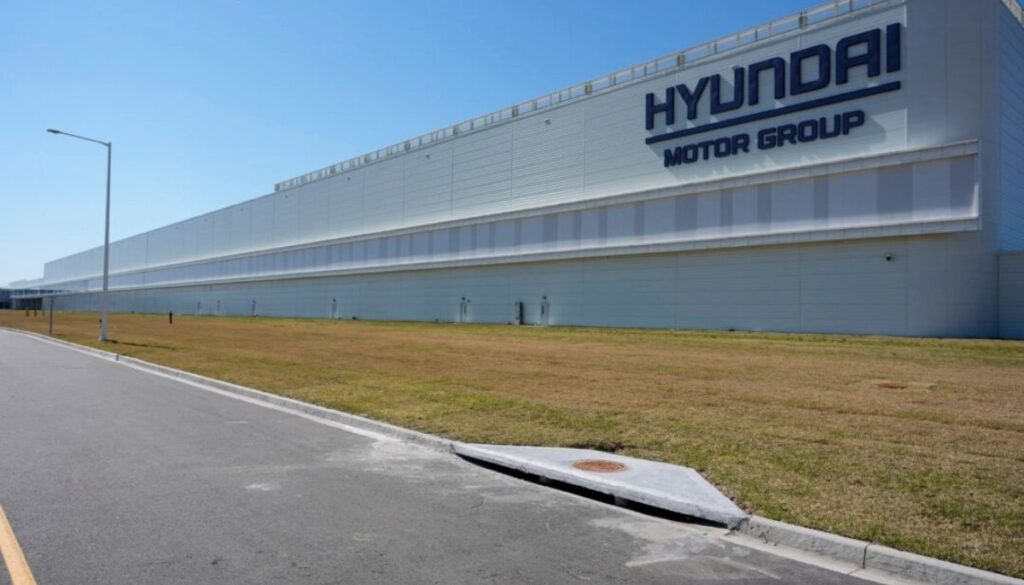For decades, the sprawling Ulsan manufacturing complex in South Korea has been the beating heart of Hyundai Hydrogen Fuel Cell Plant, synonymous with internal combustion engines (ICE). But a seismic shift is underway. With the groundbreaking ceremony for a new $680 million hydrogen fuel cell plant, Hyundai Motor isn’t just building a factory; it is tearing down the past to forge the future. This massive investment signals that hydrogen is no longer a distant possibility it is an immediate, actionable strategy designed to dominate the global clean energy market by 2028.
From Gearboxes to Fuel Stacks: A Symbol of Transformation
The Hyundai Hydrogen Fuel Cell Plant significance of this $680 million commitment is amplified by its location. The new facility is rising on the site of a redundant gearbox and clutch plant within the Ulsan complex. What better symbol of the transition from the mechanical age to the energy age could we ask for? Where once complex ICE components were machined, the focus will now shift entirely to the production of high-tech fuel stacks and fuel cell system assembly.

Hyundai Hydrogen Fuel Cell Plant We have to ask ourselves: Why such an aggressive, single-minded focus now? The answer lies in context. This $680 million project is not a standalone venture; it is a critical pillar of the “Energy Mobilizer” component within the massive $90 billion ‘Hyundai Way’ strategic investment earmarked for 2024 through 2033. This financial scale validated by recent A-grade credit rating upgrades for Hyundai demonstrates that hydrogen is structurally embedded into the company’s long-term financial health, positioning Hyundai as arguably the most aggressive global promoter of fuel cell vehicles (FCVs).
The HTWO Vision and the 2028 Deadline
Hyundai Hydrogen Fuel Cell Plant is often called the ultimate energy carrier. If electricity is the water hose, hydrogen is the colossal storage tank, capable of holding immense energy produced from renewable sources like solar or wind. The Ulsan plant is where Hyundai will build the critical machinery to unlock that stored energy. Targeting mass production by 2028 , the facility will significantly ramp up the company’s fuel cell system capacity beyond its existing 6,500-unit facility in Guangzhou, China.
This investment underpins Hyundai Hydrogen Fuel Cell Plant‘s “HTWO” (Hydrogen + Humanity) strategy, which focuses on the entire value chain from production and storage to utilization across various sectors. This commitment extends far beyond the popular NEXO passenger FCEV, which already boasts an impressive over 826 km range. Critically, the Ulsan stacks will feed the burgeoning commercial sector, supporting vehicles like the upgraded Universe FCEV bus, capable of traveling up to 960 km on a single charge. The ability of fuel cells to offer superior range and fast refueling makes them essential for decarbonizing heavy-duty transport, a niche where traditional battery-electric vehicles still struggle.
Korea: The Hydrogen Home Field Advantage
If we look closely at South Korea, we see why Hyundai feels confident making such a massive bet. Korea is not just a market; it is an “innovation laboratory and commercial success story” for hydrogen. Fuel cell vehicle sales in the home market recently more than tripled, surging by 200% Hyundai Hydrogen Fuel Cell Plant.
Hyundai Hydrogen Fuel Cell Plant More important than current sales figures, however, is the regulatory assurance. The South Korean government has meticulously de-risked this private investment through national policy. Goals include producing 30,000 hydrogen-powered commercial vehicles by 2030 and integrating hydrogen into the energy mix via the Clean Hydrogen Portfolio Standards (CHPS). Fully implemented in 2024, CHPS mandates that power producers secure long-term, 15-year purchase contracts for clean hydrogen. This supportive framework guarantees long-term, stable demand for Hyundai’s fuel cell components, both for mobility and stationary power generation applications (which are targeted to reach 15 GW by 2040).
Hyundai Hydrogen Fuel Cell Plant’s $680 million Ulsan plant, set for completion in 2028, is therefore more than just a factory it is a strategic pivot point. Backed by $90 billion in capital and secured by government-guaranteed demand, this groundbreaking solidifies South Korea’s position as a global hydrogen powerhouse and ensures Hyundai remains the assertive frontrunner in the race for a zero-emission future.